Slow Cooked Deer Shoulder
December 18, 2017 | Updated December 23, 2020
As an Amazon Associate I earn from qualifying purchases.
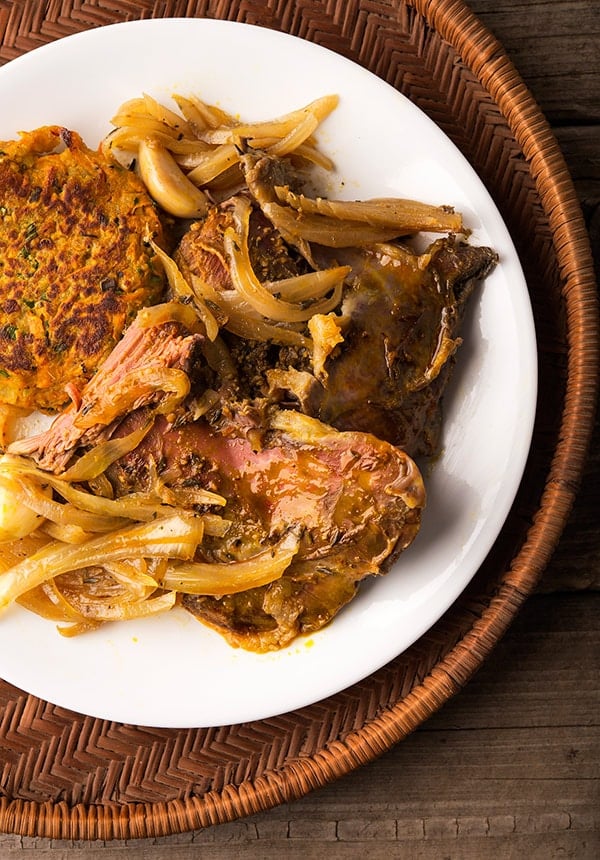
What can you do with deer shoulder? Lots of things, but it all depends on the deer. I shot a Coues deer recently, and, as you may know, they are very small deer. So small I decided to slow cook a whole shoulder in one shot.
I love doing this. When you have a cut of meat small enough to fit in a pot or roasting pan, you really owe it to yourself to leave it on the bone and cook it whole. Why? You get the benefit of all that connective tissue, and the meat stays moister when it’s on the bone. Still, with venison shoulder, you need to cook some sort of pot roast.
Slow, moist cooking is the way to go because it will melt all that connective tissue in a deer shoulder without drying out the meat. This process takes hours.
Which route you take is up to you. I already have a fantastic venison pot roast recipe, that uses Polish cuisine as a base. But I prefer to use venison neck for that recipe. While deer shoulder can certainly be used for that Polish-style dish, I decided to look more south for inspiration this time. Really far south. As in Africa.
Senegal, to be exact. Before you click away, thinking this must be too weird to even try, it isn’t. Senegalese food is heavily influenced by France, which was the country’s former colonial overlord. And while there are some cool Senegalese touches you can add to make this more “African,” the basic recipe is easy to make.
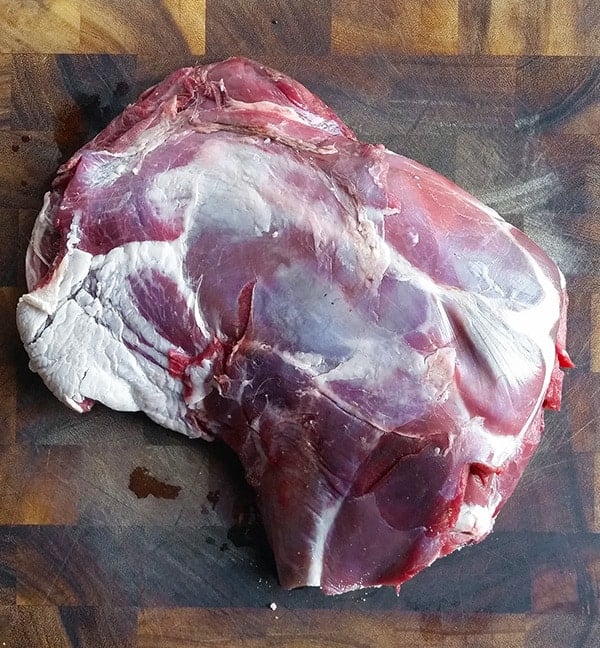
You salt a deer shoulder and then jam garlic cloves into it. You then smear it with a mixture of Dijon mustard, cumin, and black pepper. Slice a bunch of onions to serve as a bed for the deer shoulder, then sprinkle dried thyme on them. Set the meat on the onions, pour over a little stock, seal the whole shebang and cook very slowly until tender.
In Senegal, this is called dibi-style lamb. Normally done with young lambs at a very low temperature, you need to modify it for deer shoulder. I got my inspiration for this recipe from Chef Pierre Thiam’s cookbook Senegal: Modern Senegalese Recipes from the Source to the Bowl, which is a great introduction to one of the most interesting cuisines of Africa.
Notice that there are no “weird” ingredients yet? You can “Africanize” this by using red palm oil instead of peanut oil, and intoxicatingly aromatic selim pepper instead of regular pepper. But it’s not necessary.
Lamb or venison shoulder can then be served with Senegalese tamarind Kani Sauce, which is essentially a tomato sauce with tamarind and Scotch bonnet peppers in it (recipe below). But many Senegalese just serve it with more Dijon mustard.
What to serve it with? Well, good bread is normal. You can also serve your deer shoulder with rice, or with sweet potato-plantain fritters. Or really whatever you’d like.
Slow Cooked Deer Shoulder, Senegalese Style
Ingredients
FOR THE POT
- 1 large onion, sliced thinly root to tip
- 1 head garlic, cloves peeled but whole
- 2 teaspoons dried thyme
- 1 1/2 cups broth or stock, any kind
FOR THE DEER SHOULDER
- 1 deer shoulder
- 4 cloves garlic, cut into little batons
- 3 tablespoons melted palm oil or peanut oil
- Salt
- 3 tablespoons Dijon mustard
- 3 tablespoons ground cumin
- 2 tablespoons freshly ground black pepper, or selim pepper
TAMARIND KANI SAUCE
- 1 tablespoon peanut oil
- 1 small onion, chopped
- 2 cloves garlic, chopped
- 6 plum or paste tomatoes, chopped
- 1 or 2 habanero or Scotch bonnet peppers, chopped
- 1 bay leaf, crumbled
- 3 tablespoons tamarind paste, seeds removed (some brands still have seeds in them)
- 1 tablespoon sugar (optional)
- 2 to 3 tablespoons Vietnamese or Thai fish sauce
- Salt and black pepper to taste
Instructions
PREPPING THE ROASTING PAN
- Line a roasting pan with lots of foil, overlapping so it's reasonably watertight. You will need to completely wrap the deer shoulder, so have enough foil to do that.
- Scatter the sliced onion and garlic cloves in the pan, then sprinkle with the thyme. Pour in the stock.
PREPPING THE POT ROAST
- Using a thin knife, stab the venison in various places and shove the batons of garlic inside. Coat the whole deer shoulder with the oil. Salt it well. Mix the mustard, cumin and black pepper together and smear this all over the deer shoulder, getting it into every crevice.
- Seal up the shoulder and set in a 200F oven. Roast until tender, which should take at least 3 hours, and as many as 10. With normal deer, start checking after about 5 hours. You want the meat to lift off the bone easily.
TAMARIND KANI SAUCE
- If you're making the sauce, do this while the venison cooks. Heat the peanut oil in a large pan over medium-high heat. Cook the chopped onion until translucent, but not browned, about 5 to 8 minutes, stirring often. Add the garlic and chopped habanero chiles and cook another minute.
- Add the remaining sauce ingredients, mix well and simmer for about 15 minutes. Turn off the heat and puree in a blender. The sauce should be thick like ketchup.
TO SERVE
- To serve, give everyone some deer shoulder with some of the juices from the pot, stewed onions and garlic, and serve with the tamarind kani sauce on the side. Crusty bread, rice or sweet potato-plantain fritters are a good accompaniment.
Notes
Nutrition
Nutrition information is automatically calculated, so should only be used as an approximation.

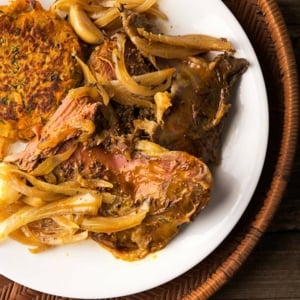

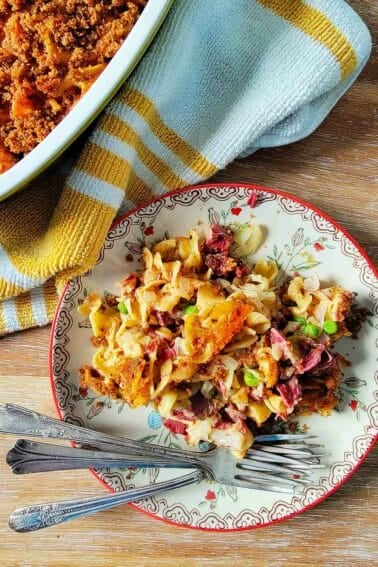
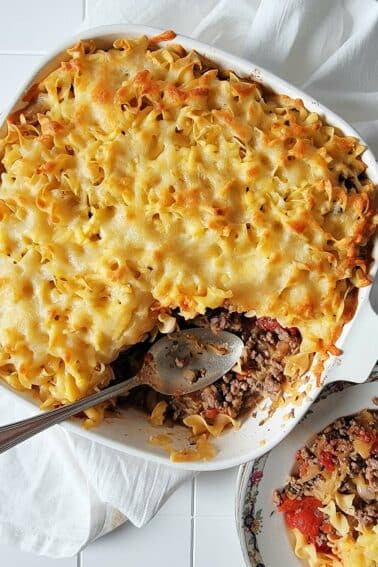
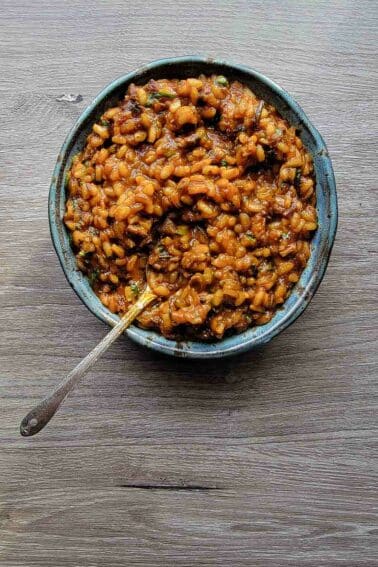
This was simply amazing!! All of the flavours go so well together!! Had people around and they thought it was brilliant! Will definitely make again. Thanks so much for the recipe!
I just made this with a pronghorn antelope shoulder that had been in my freezer for a year…it was GREAT!!
Excellent way for me to get out of my rut with venison shoulder. My “go to” is the barbacoa recipe which is fantastic but this roast has unique flavors that we loved. We will definitely make this again.
Just made this this week and it was sensational. Thanks for the idea!
Excellent.
Genuinely African in flavor and texture. Prepared from a whole front shoulder from a mature, but by no means old doe, the shoulder was allowed to braise at 200 degrees in a foil package tucked into a lidded cast iron pot for 11 hours.
The lean meat is kept moist by the infusion of garlic and onion broth while a healthy dose of cumin and black pepper brings a familiar heat to the brow then cooled by the tart nature of the Tamarind Kani sauce.
This is a wonderful preparation for a portion of animal all to often resigned to the grinder.
I will start by saying, I overcooked mine. It came from a smallish young buck and I should have known better. I left it in for nearly 5 hours, but should have checked it much sooner. That being said, this method worked nicely because it was still tender. I did raise an eyebrow though when I saw the measurement for pepper. It was too much for my family. Cutting it with the juices (I didn’t make the tamarind sauce though) seemed to help mellow it a little. One disappointment though was I could barely taste the dijon. I will definitely try this again, but maybe with a different spin on the spices.
Looking forward to this! I am putting this in the crock pot at the moment. I haven’t done all the extra. My daughter is allergic to peanuts, so just did mostly the base-garlic and bone broth in the bottom, garlic in the roast and covered with the cumin and Dijon . It smells amazing so far. Thank you for this recipe.
What do you mean by seal it up? Does it mean cover the roasting pan with foil?
Kimberly: Yes, that’s what I mean.
This recipe sounds delicious and appears to be of Tanzanian influence, correct me if I’m wrong. Nonetheless, I can’t wait to make this tomorrow, one day after Thanksgiving. It should prove to be a nice break from turkey.
RJ: It’s Senegalese, not Tanzanian.
Loved this meal! Of all the venison recipes I’ve done from this website the Senegalese shoulder roast is my wife’s favorite. Next time I think we’ll eat it with some naan bread.
What about using an electric crock pot
John: Sure, if you can fit a deer shoulder in a crockpot…
Hank,
When selecting a roasting pot would you go with an oval pot with a lid or a rectangle pot without a lid? What roasting pot would be best for this recipe? Looking forward to giving this recipe a try.
Phil
Phil: Whatever fits the shoulder at hand. If you use the big rectangle roaster pans, be sure to cover it with foil.
Delicious! Did not make the sauce since I didn’t have all the ingredients but the meat was terrific. Shoulder from a spike whitetail was in for 8 hours at 225 F. Tender, moist, and delicious! Could have gone even longer to be even more tender but we got hungry. 🙂 Thanks for the recipe!
I’ve just cooked this dish and am now in love with senagelse cooking. Wow the aroma when I opened the sealed pot after three hours lingers on .
Many thanks
Robin
Looks very tasty. Thanks for the detailed instructions.
ahh-of course–Duh! huge difference in age! thanks Hank for pointing out the obvious!
Hank,
All the shoulder I have is already deboned. Will that still work or would it dry out too much? Any modifications?
Beth: Is the meat in large pieces? Then sure, it’ll work. You don’t want to make this with little bits of shoulder, though.
I am interested in trying this with either a deer shoulder as suggested or one of our young goats. I am curious though as to why it is necessary to wrap the meat in foil inside the stock pot? Couldn’t you just leave the lid on the pot?
Thx- your recipes are always fantastic, so I’m sure there is some logic I’m not seeing!
Jaime: It’s extra protection from moisture loss. Another option is to put heavy duty plastic wrap over the top of the pot, then putting the lid on.
i assume this is wild venison, which implies 100% grass fed/pastured. how different is this from 100% grass fed/pastured lamb?
i ask because i have no access to venison…(and we raise 100% pastured lamb 😉
also, in the past when i have done this wonderful slow-cooking method, i’ve found that grass fed ruminants tend to have a lot of water in their meat. so after the slow-cooking of at least 5 hours at 200F, in a closed dutch oven, with no extra liquid added, there are enough juices from the garlic/onions and meat ONLY to almost fill the pot!
this makes me question the addition of the broth?? is it necessary?
Tuffy: Yes, the liquid is necessary. Lamb is not venison. They cook differently, and remember, a typical deer is 3+ years old. That’d be some old mutton. You can do this with lamb shoulder no problem, but it will take less time.